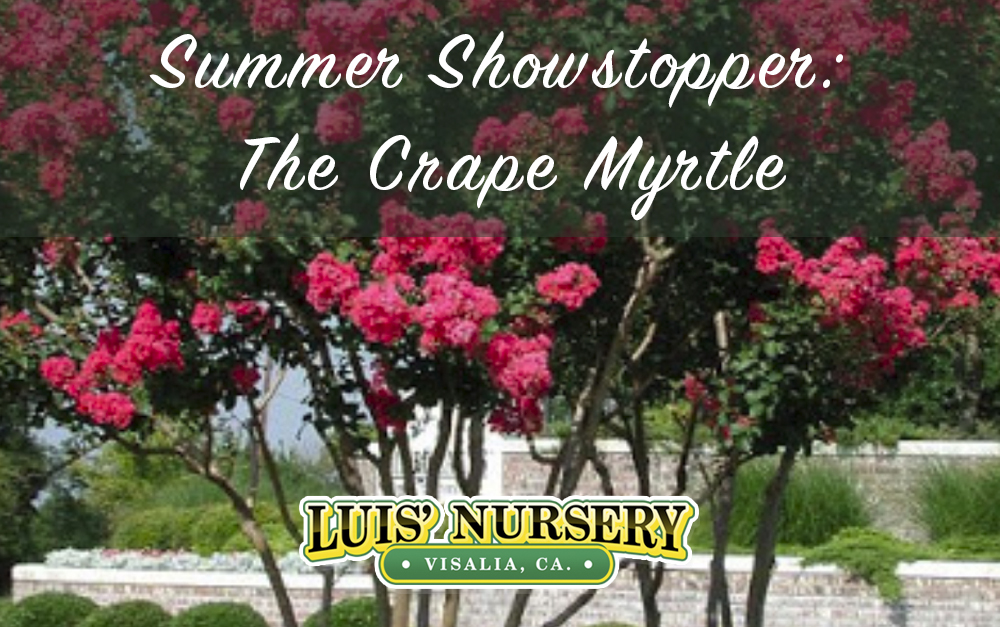In our last article we talked about one summer showstopper, the hydrangea. We received such a great response that we thought we’d highlight another summer favorite – the Crape Myrtle. Crape Myrtles are a Luis’ Nursery favorite because they are perfect for the San Joaquin and Central Valley area.
In the summer here in Visalia when things start to feel dry or dusty, these stage-stealing showstoppers brighten up our landscapes with beautiful white, pink, purple, and red flowers that bloom with the kiss of our summer sun. They are rumored to have earned their name from the crepe-like texture of the blooms. These beauties truly feel like living bouquets.
Crape Myrtle is a drought-tolerant medium to large shrub or a small multi-stemmed tree that gains a height of up to 40 feet. It is well suited to Visalia’s hardiness zone(9B) with a tolerated soil pH from 5.5 and 7.5. The Crape Myrtle thrives in full sun, begging for at least six hours a day of sunlight. More sun = more beautiful blooms for you to enjoy!
These trees and shrubs are quite resilient and can be planted most any time of the year, even in summer. When planting in the summer heat, you would just need to be sure they are well-watered when first planted. Overall, Crape Myrtles are water-wise shrubs and can withstand extreme temperatures with little to no water. Just take care to be sure they are fully established by watering infrequently, but deeply. Mulch and a good irrigation drip line will help you to conserve soil moisture.
Even before this beautiful plant blooms, it still finds a way to stand out with its colorful leaves. These leaves range from tinged red in the spring, to dark green in the summer, and then transitioning to burgundy fall foliage. The bark of the Crape Myrtle peels back in the summer to unearth it’s mottled new bark ranging in hues from pale cream to dark cinnamon.
Some quick tips for Crape Myrtle plant care:
- Fertilize mature plants at least once a year with a complete fertilizer
- Prune them in the dormant season to increase potential blooms in summer. Remember to remove spent flowers and crossing branches
- Plant a resistant variety in full sun with adequate air circulation to avoid powdery mildew and aphids – the enemies of crape myrtle
- Water infrequently, but deeply
- Plant in a hole twice the size of the root ball in a spot with enough room for the plant to spread and grow
How can you use Crape Myrtle in your garden design? The Crape Myrtle’s non-invasive roots make it a popular choice for street trees or near walkways or driveways. You can also add an individual plant as a focal point in your garden design or use the smaller dwarf varieties as additions to your garden beds or borders. They would also make a beautiful privacy garden hedge, when planted closer together. If you add them among other spring blooming trees, you’ll have prominent late summer colored blooms throughout even the driest of summers.
You can certainly see why this drought-tolerant, low maintenance shrub is one of our favorites here at Luis’ Nursery in Visalia. We would love to hear your thoughts about this beautiful plant and how you incorporate it into your Central Valley garden!



